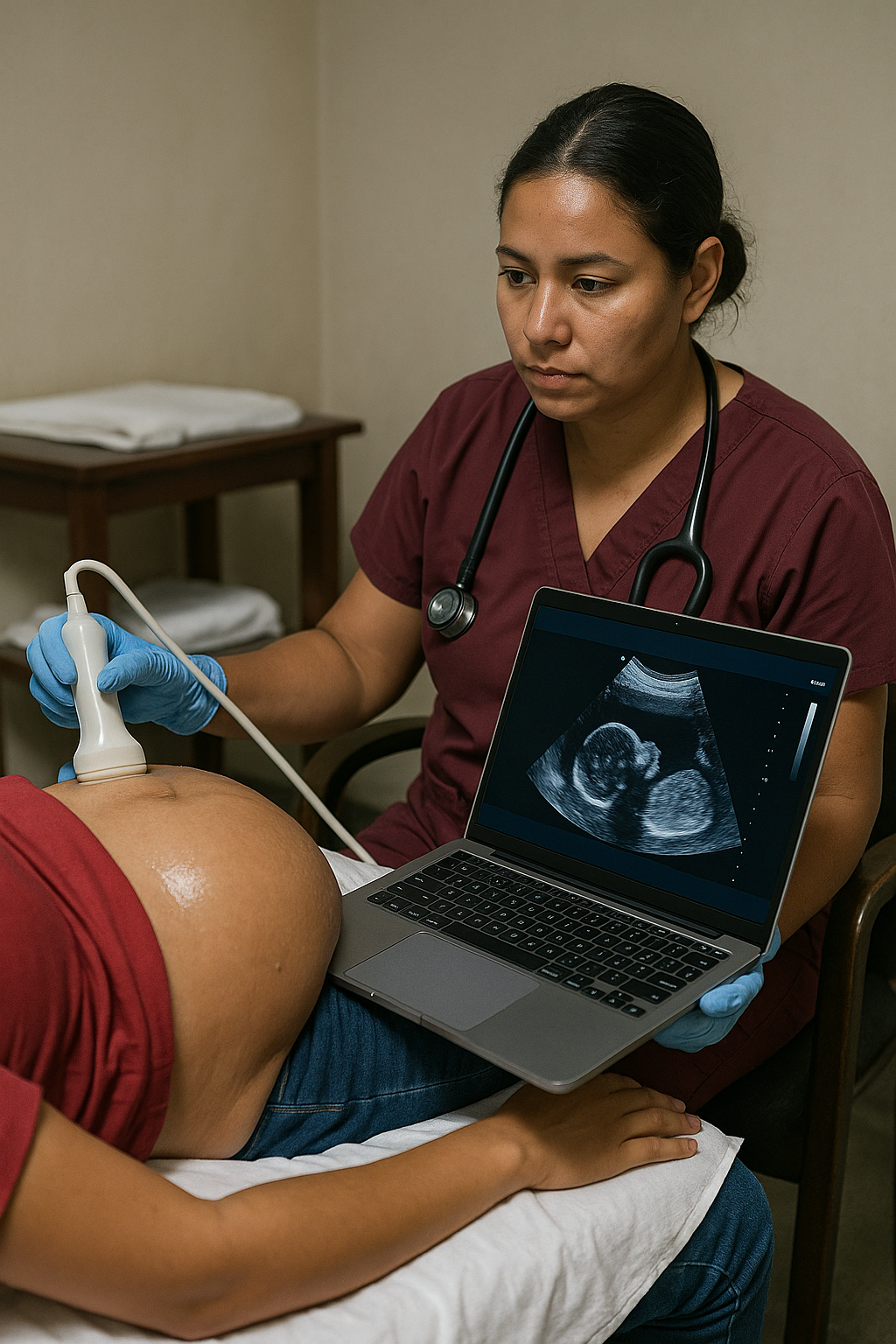AI-powered telemedicine bridges prenatal care gap in low and middle-income countries
The AI component integrates deep learning models capable of identifying standard fetal planes critical for prenatal assessments. By automatically selecting the most diagnostically useful images and presenting them through a web-based platform for specialist review, the system reduces the workload on obstetricians while improving the quality and consistency of images captured by non-experts.

Global health systems face persistent challenges in reducing maternal and neonatal mortality. Addressing this gap, a team of researchers has developed an innovative telemedicine system powered by artificial intelligence to strengthen prenatal healthcare in low- and middle-income countries (LMICs). The system offers an accessible and effective way to help non-expert healthcare providers perform essential fetal imaging in underserved regions.
The study, published as an arXiv preprint with the title “Development and Evaluation of an AI-Driven Telemedicine System for Prenatal Healthcare”, introduces NatalIA, a human-in-the-loop AI telemedicine platform designed to support midwives in acquiring and interpreting obstetric ultrasound images. The research provides a detailed evaluation of its technical performance, usability, and field feasibility, aiming to bridge the gap between remote communities and specialized maternal care.
Addressing prenatal care gaps with AI and low-cost ultrasound
The study responds to a pressing global challenge: millions of women in LMICs lack timely access to obstetric ultrasound due to shortages of trained sonographers and limited healthcare infrastructure. Early detection of pregnancy complications often depends on imaging that is unavailable in rural and remote areas, resulting in preventable maternal and neonatal health risks.
To tackle this problem, the researchers developed NatalIA, which pairs handheld point-of-care ultrasound (POCUS) devices with an AI-based guidance system. The system uses a human-in-the-loop approach to ensure that midwives, even with minimal training, can capture diagnostically relevant fetal images through blind sweep ultrasound protocols.
The AI component integrates deep learning models capable of identifying standard fetal planes critical for prenatal assessments. By automatically selecting the most diagnostically useful images and presenting them through a web-based platform for specialist review, the system reduces the workload on obstetricians while improving the quality and consistency of images captured by non-experts.
Evaluating AI performance and clinical usability
The study conducted a structured evaluation of NatalIA’s technical performance and field usability. The researchers compared three leading deep learning architectures, SonoNet, ResNet-18, and ResNet-50, for fetal plane detection. Among these, ResNet-50 achieved the best results with an accuracy of 92.9 percent and an F1-score of 93 percent, demonstrating reliable performance for practical deployment in low-resource settings.
To test the system’s usability, eight midwives in rural Guatemala participated in a controlled study using both a fetal phantom model and handheld ultrasound devices. After a brief one-hour training session, the midwives performed blind sweep scans, with the AI system guiding them in acquiring the correct views. The AI-generated predictions were later validated by experienced obstetric specialists and showed strong alignment with expert assessments.
Usability testing further revealed that NatalIA was intuitive and accessible, even for users with limited prior ultrasound experience. NASA-TLX workload assessments indicated low cognitive and physical demands, confirming that the system could be integrated into routine prenatal care without overburdening frontline health workers. Midwives provided positive feedback, citing the system’s ease of use on mobile devices and its potential to improve the quality of prenatal diagnostics in their communities.
However, the study also sheds light on certain field challenges. Midwives identified infrastructure-related barriers, such as unreliable internet connectivity and limited access to robust devices in rural areas. They also suggested the addition of multilingual support, including Mayan languages, and enhanced real-time assistance features to further improve usability.
Bridging technology and healthcare delivery in underserved areas
The researchers stress that NatalIA’s strength lies in its human-in-the-loop telemedicine design, which combines AI-driven automation with the oversight and expertise of remote specialists. This collaborative model not only enhances diagnostic accuracy but also builds trust among healthcare providers and patients, particularly in rural communities where advanced medical technology is often viewed with caution.
By facilitating better communication between midwives and specialists, the platform reduces delays in decision-making and allows early interventions for at-risk pregnancies. This approach aligns with global priorities in maternal and neonatal health, demonstrating how AI-assisted telemedicine can fill critical service gaps in LMICs.
Nevertheless, the study acknowledges certain limitations. The evaluation relied primarily on data from phantom models rather than real pregnant patients, and the sample size of participating midwives was relatively small. The authors call for expanded clinical trials involving pregnant women, as well as long-term monitoring to assess the system’s impact on maternal and neonatal health outcomes in real-world conditions.
Additionally, the research underscores the need for infrastructure investment to support scalable deployment. Reliable internet connectivity, affordable handheld ultrasound devices, and adequate training for frontline health workers are crucial for maximizing the potential of AI-driven telemedicine solutions.
- FIRST PUBLISHED IN:
- Devdiscourse










